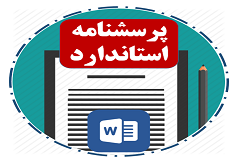Table of Contents
Title Page
Abstract……………………………………………………………………………………..I
Table of Contents……………………………………………………………………………II
List of Tables……………………………………………………………………………….V
List of Charts……………………………………………………………………………….VI
Chapter One
-
Introduction
-
Overview………………………………………………………………………2
-
Statement of the Problem………………………………………………………3
-
Significance of the Study………………………………………………………3
-
Purpose of the Study…………………………………………………………..5
-
Research Questions……………………………………………………………5
-
Limitation and Delimitationsof the Study………………………………….6
-
Definition of Key Terms………………………………………………………6
-
Chapter Two
-
Review of the Literature
-
Overview……………………………………………………………………..10
-
Translation: Definition……………………………………………………….10
-
Translation: Different Approaches……………………………………………12
-
Word-for-Word versus Sense-for-Sense Translation………..……………12
-
-
-
Semantic and Communicative Translation……………………………….14
-
Genre………………………………………………………………………….15
-
Genres: Different Types of Discourse…………………………………….16
-
Style…………………………………………………………………………..19
-
The Significance of Style………………………………………………….20
-
Features of Style………………………………………………………….22
-
Style and Content…………………………………………………………24
-
-
Level of Formality……………………………………………………………24
-
Scales of Formality……………………………………………………….26
-
Types of Style (According to the Levels of Formality)…………………26
-
-
Standard Language……………………………………………………………27
-
Formal Style………………………………………………………………29
-
Informal Style………………………………………………………….…29
-
Colloquial Style…………………………………………………………..30
-
Translation of Colloquial Language………………………………32
-
Slang………………………………………………………………32
-
Distinction between Colloquialism and Slangism……….33
-
-
Idiom………………………………………………………………34
-
Types of Idioms…………………………………………..35
-
Translation of Idioms: Difficulties……………………….35
-
Translation of Idioms: Strategies…………………………36
-
-
Non-Standard Language………………………………………………………37
-
Translation Strategies…………………………………………………………38
-
Relevant Studies………………………………….………………………….45
-
-
Chapter Three
-
Methodology
-
Introduction…………………………………………………………………..49
-
Model selection……………………………………………………………….49
-
Novel Selection……………………………………………………………….50
-
Materials………………………………………………………………………50
-
-
Writing style of Beloved…………………………………………………..50
-
Procedure……………………………………………………………………..52
Chapter Four
-
Data analysis
-
Classification of data by MacCrimmon’s Model……………………………..55
-
Daghighian’s Translation…………………………………………………….61
-
Sehati’s Translation………………………………………………………….75
-
Saaidnia’s Translation………………………………………………………..88
-
Chapter Five
-
Conclusions, Discussions and Suggestions
-
Overview……………………………………………………………………103
-
Summary of findings……………………………………………………….103
-
Conclusion….……………………………………………………………….105
-
Discussion of findings………………………………………………………107
-
Suggestions for further research…………………………………………….114
-



